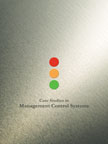Operations Management
 |
Details
Textbook:
Pages : 329;
Paperback;
210 X 275 mm approx.
Workbook:
Pages :
239; Paperback;
210 X 275 mm approx, Sample Applied Theory Questions
Courier charges extra
Pricing
Textbook Price: Rs. 900;
Workbook Price: Rs. 700;
Available only in INDIA
Detail Table of Contents
Click below to view
HTML
Forecasting Demand : Chapter 3
SUMMARY:
In the face of global competition, many Indian manufacturers suffered declining sales, market share, and profitability, during the early 1990s. One of the main reasons for this decline was the ineffectiveness of the operations strategy. Managers now realize the significance of operations strategies and are using them as competitive weapons. Operations strategy, in general, involves planning, allocation of resources i.e. men, money, material and machine to gain competitive advantage.
|
|
In the past, managers concentrated most of their efforts on finance and marketing strategies. However, companies started recognizing the significance of operations strategies. Wickham Skinner, a Harvard Professor opined – "A firm lacking proper operations strategy is like an anchored ship. Finance, design, and marketing may set the rudder and expect the ship to steam off, but with anchor set, the ship won't move, or moves reluctantly, dragging its burden."
In this chapter we have discussed the basics of operations strategy, the competitive advantage an organization can gain by aligning operations planning with strategic planning, and economic and financial analysis required to analyze the costs involved in executing operations and the return on investments



